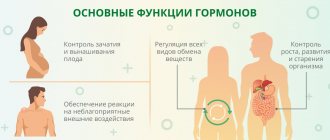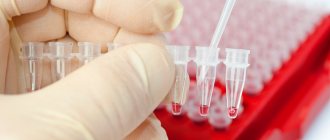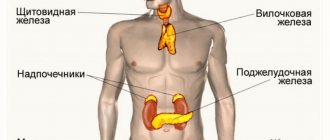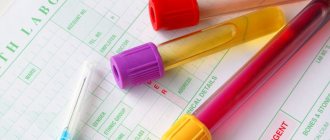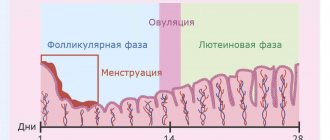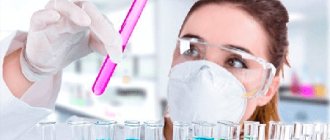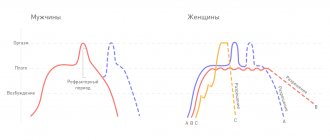Testosterone analysis: how to prepare
• Since physical activity stimulates the production of testosterone, you should avoid it the day before the test. This applies to intense sports and regular weight lifting. Smoking should also be avoided.
• For children and men, the test can be taken in the morning, on any day, for women - on the 6-7th day of the menstrual cycle (unless the attending physician has prescribed other dates for diagnostic purposes).
• The most favorable time to take blood for testing is from 8 to 11 am. A prerequisite is that blood is donated on an empty stomach, that is, after 8 and no more than 14 hours without food. You can only drink water.
References
- Mohler, E., Ellenberg, S., Lewis, C. et al. The Effect of Testosterone on Cardiovascular Biomarkers in the Testosterone Trials. J Clin Endocrinol Metab., 2021. - Vol. 103(2). — P. 681-688.
- Livingston, M., Kalansooriya, A., Hartland, A. et al. Serum testosterone levels in male hypogonadism: Why and when to check-A review. Int J Clin Pract., 2021. - Vol. 71(11).
- Bhasin, S., Woodhouse, L., Casaburi, R. et al. Testosterone dose-response relationships in healthy young men. Am J Physiol Endocrinol Metab., 2001. - Vol. 281(6).
- Miyauchi, S., Miyake, T., Miyazaki, M. et al. Free testosterone concentration is inversely associated with markers of liver fibrosis in men with type 2 diabetes mellitus. Endocr J., 2021. - Vol. 64(12). — P. 1137-1142.
Testosterone analysis explanation
Analysis for testosterone in men: the norm for men from 16 to 50 years old is 5.13 – 30.43 nmol/l. Testosterone levels in older men decrease and remain within the range of 5.4 – 19.5 nmol/l.
Testosterone analysis in women: the norm in women and girls from 13 years of age and throughout their reproductive years is between 0.36 and 1.97 nmol/l. During pregnancy, testosterone levels can be 3-4 times higher than normal. After menopause, the hormone level may decrease slightly and range from 0.28 to 1.22 nmol/l.
Testosterone analysis in children: the norm for boys in the first six months of life can vary from a minimum amount of 0.3 to a high concentration of 10.36 nmol/l. From 6 months to 9 years, testosterone levels usually remain stable below 1.24 nmol/L. For teenage boys, total testosterone is considered normal if it is below 15.41 nmol/L.
In girls under 13 years of age, testosterone levels usually do not exceed 0.98 nmol/l.
We must also remember that all people usually have hormone levels that fluctuate throughout the day: from the maximum value in the morning to the minimum in the evening.
All tests for testosterone should be interpreted by a doctor who takes into account not only the generally accepted average values of indicators, but also other factors that can affect the concentration of total testosterone in the blood.
FSH (follicle stimulating hormone)
The analysis is taken on the 3rd–8th or 19th–21st days of a woman’s menstrual cycle, for a man - on any day. Strictly on an empty stomach. In women, FSH stimulates the growth of follicles in the ovaries and the formation of estrogen. It promotes the growth of the endometrium in the uterus. Reaching a critical level of FSH in the middle of the cycle leads to ovulation.
In men, FSH is the main stimulator of the growth of the seminiferous tubules. FSH increases the concentration of testosterone in the blood, thereby ensuring sperm maturation. It happens that the hormone works at full strength, but there is no point where it is in demand. This happens when a man's testicles are small or have suffered from some kind of surgery or infection.
What causes increased testosterone?
• Adrenogenital syndrome provokes high testosterone in women;
• New growth of the testes increases testosterone in men;
• Disease or Itsenko-Cushing syndrome;
• A neoplasm in a woman’s ovaries, leading to the development of “masculinity” (deepening of the voice, a figure similar to a man’s, etc.);
• Decreased sex steroid binding globulin, or SHBG, in the blood;
• Excess and high intensity physical activity;
• The use of certain medications, such as levonorgestrel, mifepristone and various oral contraceptives, as well as tamoxifen, finasterine, danazol, phenytoin, etc.
When should you take a Testosterone test?
For men and women:
- Infertility;
- Hair loss;
- Acne;
- Seborrhea;
- Adrenal tumors;
- Monitoring the results of corticosteroid use.
Among women:
- Hirsutism;
- Endometriosis;
- Uterine fibroids;
- Lack of menstruation;
- Menstrual irregularities;
- Lack of ovulation;
- Habitual miscarriage;
- Polycystic ovary syndrome;
- Neoplasms of the mammary gland.
For men:
- Prostatitis;
- Decreased sexual desire;
- Problems with potency;
- Climax;
- Hypogonadism;
- Osteoporosis.
Testosterone hormone in women - where does the danger lie?
Femininity does not mean that women should have no testosterone at all.
Everyone knows that excess testosterone in women causes masculinity, infertility, excess hair growth, as well as increased excitability and aggression. But low testosterone in women and men leads to decreased libido, physical weakness, hair loss, excess body weight, osteoporosis, atrophic changes in the skin, decreased mood, and even depression. Therefore, both high and low testosterone pose a danger to women’s health.
Having learned from your doctor about testosterone, how to increase its level, you can use simple methods that are available to everyone and approved by modern medicine.
Complexes with this research
Male infertility.
Extended examination Analysis of the state of male reproductive health 29,030 ₽ Composition Fitness monitoring Examination for choosing physical activity and monitoring the state of the body 6,780 ₽ Composition
Fitness control of sports nutrition Assessment of liver function, hormone levels and metabolism when taking sports nutrition 5,140 ₽ Composition
IN OTHER COMPLEXES
- Anti-aging diagnostics. Hormonal balance RUB 6,250
- Preventative check-up RUB 11,960
- Three important indicators for a man RUB 1,810
- Female hormones. Follicular phase RUB 5,930
- Advanced male anti-aging diagnostics RUB 33,710
“It’s your hormonal imbalance!”
Hormones are biologically active substances that are produced in the cells of the endocrine glands. Modern science knows more than 100 hormones responsible for various functions, the most famous of them:
- pancreatic hormones (insulin, glucagon);
- thyroid gland (TSH, T3, T4);
- adrenal glands (adrenaline, norepinephrine, cortisol, aldosterone);
- ovaries (progesterone and estrogen);
- pineal gland (melatonin and serotonin);
- substances secreted by the hypothalamus - prolactin, oxytocin, luteinizing hormone.
It is rare that a hormone is responsible for a specific function. For example, the sex hormones estrogen and progesterone, in addition to direct reproductive function, protect blood vessels from damage by atherosclerosis, and bones from calcium loss, stimulate collagen synthesis for smooth skin and healthy joints. It is thanks to them that women before menopause are much less likely to suffer from high blood pressure.
Nadezhda Bezemskaya, a doctor and expert at the Laboratory of Personalized Medicine LabQuest, will talk about how a woman may suspect a hormonal imbalance.
Maybe hormones are to blame?
A very accurate indicator of a woman’s health is her menstrual cycle. Regular and without pathological pain, the nature of menstrual flow: not too scanty, but not very abundant - all this indicates the absence of disorders. What does regular mean - the onset of menstruation occurs with a certain frequency. For some it is 24 days, for others it is 45, and for some women, each next cycle is longer or shorter by 3-5 days than the previous one. Those. Menstruation occurs at sufficient intervals to predict the onset of the next cycle. Deviations from the usual schedule for 1-2 days are not considered by doctors as a pathology.
Since hormones affect weight, mood, skin, hair and nails, their condition can be an indicator of the health of the hormonal system. Excess weight that is difficult to “lose”, a feeling of persistent fatigue, male-pattern hair growth or a sharp increase in hair growth in general, irritability and tearfulness, changes in skin condition – increased greasiness and the appearance of acne, deterioration in hair condition – dull and brittle – all this can be a manifestation of hormonal disorders.
How to find out what exactly is broken in the system?
To confirm the suspicion, take a set of tests and visit a gynecologist or endocrinologist. The following hormones are usually tested:
- thyroid hormones (TSH, T3, T4)
- prolactin;
- progesterone;
- luteinizing hormone (LH);
- follicle-stimulating hormone (FSH);
- estradiol;
- free testosterone.
Sex hormones must be taken on strictly defined days of the cycle. It is important to remember that it is useless to take sex hormones when taking oral contraceptives, since the data will be unreliable. You can go to the laboratory a month after stopping the pills, when your first spontaneous menstruation begins.
A blood test for follicle-stimulating hormone, luteinizing hormones and prolactin, estradiol is given on days 3–5 of the cycle. The day of the start of menstruation is day 1 of the cycle. It is better to donate blood for testosterone on days 7–9, in the period before expected ovulation. But studies on progesterone will be relevant at the end of the cycle on days 21–22. Thyroid hormones are not subject to cycling: T3 and T4 can be taken on any day. If a woman has a cycle longer than 28 days, the doctor will prescribe the best days for testing.
The most important thing in diagnosis and treatment
The most important aspect in diagnosing and treating diseases is accuracy and timeliness.
Timely detection of diseases and timely initiation of treatment can prevent the development of numerous complications. The absence of a menstrual cycle for six months leads to serious changes in the body, which contributes to infertility. But the accuracy of diagnosis is no less important. Even if you have chosen a proven and reliable laboratory, be sure to follow a few simple rules that will help you obtain a reliable hormonal profile analysis:
— Donate blood in the morning, preferably before 9 am. This rule is due to the fact that “peak” levels for most hormones occur somewhere between 5-7 am.
- Take your time. If you rush into the laboratory after running a block, afraid of being late, the data on some particularly stress-sensitive hormones will likely be overestimated. For example, prolactin. Therefore, take your time, and when you come to the laboratory, give yourself time to relax and unwind.
— Avoid excessive stress, including sexual activity, at least one day before the test.
After receiving the test results, consult your doctor for a transcript, as they have diagnostic value only when considered with specific symptoms.
LH (luteotropic hormone)
In women, luteotropic hormone stimulates the synthesis of estrogen; regulates the secretion of progesterone and the formation of the corpus luteum. In men, by stimulating the formation of sex hormone binding globulin (SHBG), it increases the permeability of the seminiferous tubules to testosterone. This increases the concentration of testosterone in the blood plasma, which promotes sperm maturation. In turn, testosterone re-inhibits the release of LH. The release of the hormone is pulsating in nature and depends in women on the phase of the ovulation cycle. During puberty, LH levels increase, approaching values typical for adults. In the menstrual cycle in women, the peak concentration of LH occurs at ovulation, after which the level of the hormone drops and remains throughout the luteal phase at lower values than in the follicular phase. During pregnancy the concentration decreases. During the postmenopausal period, the concentration of LH increases, as does FSH (follicle-stimulating hormone). In women, the concentration of LH in the blood is maximum in the period from 12 to 24 hours before ovulation and is maintained throughout the day, reaching a concentration 10 times higher compared to the non-ovulatory period. In men, LH levels increase by 60-65 years. Indications for the analysis: hirsutism, decreased libido and potency, anovulation, oligomenorrhea, amenorrhea, infertility, dysfunctional uterine bleeding, miscarriage, premature sexual development or delay, sexual infantilism, endometriosis, monitoring the effectiveness of hormone therapy. An increase in LH levels is observed with insufficient function of the gonads, polycystic ovary syndrome, pituitary tumors, renal failure, and gonadal atrophy in men after testicular inflammation. A decrease in LH levels occurs with secondary amenorrhea; hypofunction of the pituitary gland and hypothalamus, genetic syndromes, anorexia nervosa, polycystic ovary syndrome, luteal phase deficiency, surgical interventions. Preparation for the study: 3 days before taking blood, you must avoid sports training. 1 hour before blood collection - smoking. Immediately before taking blood, you need to calm down. Blood is drawn on an empty stomach, lying down. The analysis is done on days 6-7 of the menstrual cycle, unless other dates are indicated by the attending physician.
